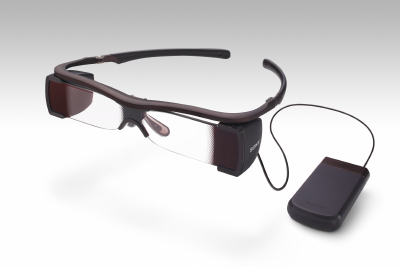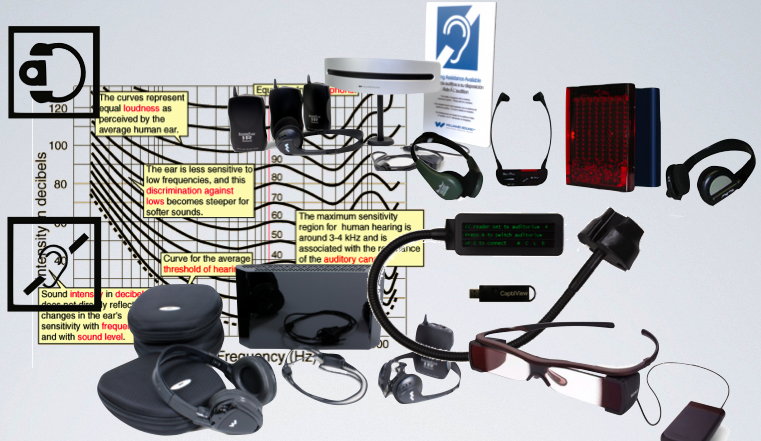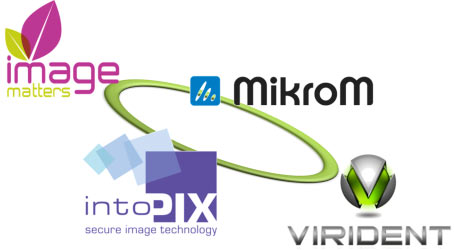Regardless, Jerry did assert a few points. Overarching was a point later made by Dolby at their Atmos launch:
- Don’t make the cinema experience like a glorified home experience.
His insinuation seemed to be that the exhibitors shouldn’t be caught up in the false premise that they are in a battle with the consumer field. He also encouraged exhibitors to experiment, giving as as example the idea of an up-charge for a “no ads” showing.
Finally he bridged into the area that one is sure he would have liked to give a Master’s Course for Exhibitors: Quality of Exhibition. Instead he only had two minutes, so he went provocative. He said that he would have preferred that he had never seen Avatar in a theater with only 3 footLamberts, declaring that the DVD at home with proper light levels was better. With that he encouraged that the audience members get “full bright plus 10 light levels” for 3D movies so that they will be stellar.
Original Article with Press Release
The Inter-Society for the Enhancement of Cinema Presentation, Inc. (the Inter-Society), in concert with CinemaCon, announced today that Jerry Pierce, former Senior Vice President of Technology at Universal Pictures and Founder/Chairman of the Inter-Society’s Digital Cinema Forum (ISDCF), will receive the Inter-Society’s “2012 Ken Mason Award.” The award will be presented at CinemaCon, which will be held April 23 – 26, 2012 at Caesars Palace in Las Vegas. CinemaCon, the official convention of The National Association of Theatre Owners (NATO), is the largest and most important gathering of cinema owners and operators from around the world.
The Ken Mason Award, named after the Inter-Society’s founder, will be presented to Pierce during the Breakfast and Industry Awards Presentation on Tuesday, April 24 by SVP of Technicolor Curt Behlmer, on behalf of the Inter-Society. The annual award honors an individual who has made outstanding long-term contributions leading to the overall improvement of the motion picture experience. Previous recipients include: Ken Mason, Barry Reardon, Al Shapiro, Bud Stone, Ioan Allen, Mark Christiansen, Sid Ganis and Gary Weaver.
“Jerry epitomizes the purpose of the Ken Mason award – he has been an instrumental leader toward excellence in the cinema experience,” noted John Fithian, President and CEO of NATO. “His guidance of the ISDCF has enabled the significant industry collaboration to address critical digital cinema-related issues. Exhibitors are undoubtedly grateful for his tremendous service to our industry.”
“From the foundation of DC28, through DCI and the ISDCF, Jerry’s singular vision has been one of the central pillars supporting today’s digital cinema technology,” said Ioan Allen, SVP Dolby Laboratories.
Jerry Pierce came to the film technology industry by way of a master’s degree in electrical engineering-laser optics at Stanford, and 14 years of engineering developments at Pratt and Whitney Aircraft and Stanford Research Institute. He joined Universal in 1995 and immediately began work developing the DVD format, as part of the Universal/Panasonic/Warner Bros./Toshiba team that moved the format from concept to launch – he and Panasonic were recognized with an Emmy award in 1999 for their efforts.
In 2000, Jerry joined the Theatrical Division of Universal Pictures and was at the ground floor of the launch of Digital Cinema. He was active within The Society of Motion Picture and Television Engineers (SMPTE) DC28, where the initial industry-wide objectives were formulated. He also served as chairman of SMPTE DC28.2, the digital cinema mastering group. Following the initial SMPTE work, Pierce became a founding member of Digital Cinema Initiatives (DCI), and served on both the management and technical committees. He also was a board member of the Entertainment Technology Center at the University of Southern California that hosted the Digital Cinema Theater in Hollywood, where the early testing for DCI was held and many of its standards first tested. His close working relationship with NATO and the Inter-Society was recognized as one of the bridges between the organizations.
Pierce, together with Wayne Anderson and John Fithian, described and initiated the Inter-Society Digital Cinema Forum in 2006 to create a group for cross-industry open discussions on the real-world evolving practices for digital cinema. This has become the de-facto location to bring up critical technical issues for digital cinema. Jerry has served as its chairman, webmaster and negotiator since its inception. It is widely recognized as the best users forum in the industry.
CinemaCon will attract upwards of 5,000 motion picture professionals from all facets of the industry –from exhibition and distribution, to the equipment and concession areas – all on hand to celebrate the moviegoing experience and the cinema industry. From exclusive Hollywood product presentations highlighting a slate of upcoming films, to must-see premiere feature screenings, to the biggest stars, producers and directors, CinemaCon will help jumpstart the excitement and buzz that surrounds the summer season at the box office. CinemaCon 2012 will be held from April 23-26, 2012 at Caesars Palace in Las Vegas. In returning to Caesars Palace, CinemaCon is able to offer its delegates a modern and upscale conference facility and a one-of-a-kind moviegoing experience in The Colosseum, the 4,200 seat theatre and crown jewel of Caesars Palace.
CinemaCon is delighted to have both the International Cinema Technology Association (ICTA) and National Association of Concessionaires (NAC) as its tradeshow partners. Cinemacon is also delighted to have as its official presenting sponsor, The Coca-Cola Company, one of the industry’s greatest and highly regarded and respected partners in the world of the movies. Additional information on CinemaCon, the Official Convention of NATO, can be found at www.cinemacon.com.
About the Inter-Society – The Inter-Society for the Enhancement of Cinema Presentation, Inc (the Inter-Society), promotes interactive dialogue and information exchange between cinema-related entities with the goal of resolving issues affecting the overall cinema presentation. Founded in 1978 by Eastman Kodak VP Ken Mason, membership is composed of its five charter trade organizations: the Association of Cinema and Video Labs (ACVL), the International Cinema Technology Association (ICTA), the Motion Picture Association of America (MPAA), the National Association of Theatre Owners (NATO) and the Society of Motion Picture and Television Engineers (SMPTE)—along with over 40 member companies, made up of trade organizations, motion picture studios, exhibition companies, manufacturers, technical consultants and other industry stakeholders. Previous activities include playing a major role in the implementation of cyan (silverless) soundtracks for 35MM film and procedures for controlling excessive loudness on trailers and feature films. Current committees include the Inter-Society Digital Cinema Forum (ISDCF) which is focused on resolving issues affecting the global digital cinema deployment, and the Inter-Society Environmental Committee (ISEC) which promotes green conservation and awareness within the cinema industry.
About NATO
The National Association of Theatre Owners (NATO) is the largest exhibition trade organization in the world, representing more than 30,000 movie screens in all 50 states, and additional cinemas in 50 countries worldwide. NATO’s membership includes the largest cinema chains in the world and hundreds of independent theatre owners, too.
Media Contacts:
Heather Lewandoski Jessica Erskine
Rogers & Cowan Rogers & Cowan
310.854.8147 310.854.8129
[email protected] [email protected]


